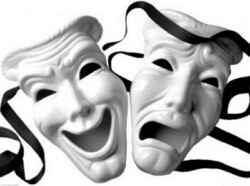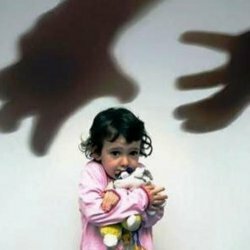Bipolar affective disorder
 Bipolar affective disorder is an endogenous permanent psychiatric-spectral disease that, depending on the type, alternates manifestations of mania, as mood states, and depression or depression and hypomania. Bipolar affective disorder is a specific disease that still gives the suffering individual a chance to actively-normal life, because it does not imprint on the personality of its defect.
Bipolar affective disorder is an endogenous permanent psychiatric-spectral disease that, depending on the type, alternates manifestations of mania, as mood states, and depression or depression and hypomania. Bipolar affective disorder is a specific disease that still gives the suffering individual a chance to actively-normal life, because it does not imprint on the personality of its defect.
This pathology is very interesting because of the manifestations of completely opposite moods in person. But depression to depressive manifestations is different, which is associated with personal psycho-behavioral characteristics. These people still require treatment, because they are capable of causing harmful actions to themselves with depressive influences or others - in mania.
What is bipolar affective disorder?
Bipolar affective disorder did not universally have this terminology, it was borrowed from American classifications, such as DSM.Manic-depressive disorder, in the old way, did not have enough illustrative names, because the symptoms of BAR do not always have mania, as a manifestation of mood, and depression. According to forecasts, such groups of diseases will rapidly increase in the 21st century and further, already now many people have subdepression and constantly take antidepressant medication. Although the very term pathology is very new, but diseases with detailed cyclic currents were known from ancient Greek time intervals, and even the ancient Greeks found them many justifications. There is even evidence that in the Middle Ages the treatment for melancholy, the prototype of depression, was the eating of a raw bull heart.
Types of bipolar affective disorder do not matter importance in our and neighboring countries, which is concluded on our ICD 10 classifier. But still it is worth studying, because the treatment still varies depending on the type.
Types of bipolar affective disorder are of several types, in particular this is the most common bipolar affective disorder of type 1.This unit determines the types of flow, allowing you to immediately understand what is in the structure of the current of the disease in a particular individual. At the first type in the individual must necessarily manifest mania in its full manifestation with vivid anti-socialities. This is important, because of the presence of expressive-bright manias, when we are afraid of the presence of phase inverting and correct the treatment. Also to the bipolar affective disorder of the 1st type are phases of a mixed character that combine the symptoms of mania, both mood states, and depression, while simultaneously. Mixed episodic manifestations do not necessarily include all the symptoms of a combined pathology, they rather have separate characteristics. For example, agitated depression, looks like a depression in everything except the psychomotor state, it is in the individual, as opposed to the classical depression, is instituted. Agitation acts as akin to anxiety. Mania can also have mixed symptoms, for example, quiet mania or unproductive, while the person is in a good spirit, but there is absolutely no motor activation, which does not affect behavior or does not have intellectual ascension. If dysphoria appears in the structure of this pathology, then increased anger is added.
Bipolar affective disorder also has a second type, which contains completely different data. Episodes mania in the structure of this type can not be, but hypomania and prolonged prolonged depression make the symptomatics no less severe. Hypomania itself does not cause problems to the patient, does not lead to obscenity, but the depression completely knocks out the individual from the life track.
Bipolar affective personality disorder, according to the ICD, is coded as F 31. In addition to the term itself, there are degrees of severity and, in fact, the episode itself, which caused the individual to enter psychiatry. Sometimes cyclothymia is classified as a series of similar pathologies, but this mitigated disorder is now taken from the symptomatology. This disease has a seasonal structure in its structure, that is, it manifests itself in different ways at different times of the year. The clinic can vary depending on the gender of the individual.
Fast cycles differ from mixed ones, that mood states quickly replace one another. In this case, between them are typical windows, when the individual is completely healthy. Sometimes there may be an inversion due to treatment, this excludes quick cycles and, with the right selection, is stopped.
Causes of bipolar affective disorder
Bipolar disorder has no age-related causes, in any case, they do not directly correlate. But nevertheless pathology is characteristic, as well as all endogenous not for senile age. Her debut falls on earlier terms, "youth" ages, which affects the able-bodied individuals. Women are more prone to such a group of pathologies, this is associated with hormonal changes, which strongly affect the female body. I must say that women often undergo hormonal failures. In women and without bipolar affective disorder, the mood is not weak. This pathology does not have clearly formulated factors of origin and is distinguished by its multifactoriality.
Predisposition to this pathology is present in individuals who have given birth to suffered similar disorders. Rarely, what disease does without genetic factors. It was revealed that pathology is identical in monozygotic twins, and there is also a correlation of the manifestation of pathology in offspring whose births suffered from such a disease. Genes responsible for such hormonal disturbances in the neurosystem have been discovered and lead to a similar pathology, but their penetrance is not 100%, which means that the accuracy of manifestation is not the same in different cases. But nevertheless, in addition to genetics, there must be an unfavorable situation.
Bipolar affective personality disorder also manifests itself with some incorrect characteristics of upbringing. A child who grows in excessive demands or, conversely, in permissiveness over time, is much more difficult to adapt in society, which leads to irreparable mental consequences.
Psychotrauma also irreparably affects the individual, especially if they are violent shocks. Such traumas include loss of loved ones, serious griefs or global catastrophes. It is worth noting that the threshold for the reaction to such events is all individual. Somatic diseases, childbirth and postpartum problems can also become a serious trigger mechanism for such a pathology. Such a catastrophic manifestation can be attributed to serious provocateurs of psychosomatics and, in general, to identify unhealthy elements of society. I must say that education also affects the tolerability of stressors, if a child is scolded for all the failures, then for him each of them will become a small death. That is why mental health and stamina are important, they will help to protect themselves from the evil external world.
Not the last in terms of role value, but the biological reason for the discovery was the last one. It became available to us only after the methods of biological, instrumental and laboratory neuroimaging, which illuminated previously hidden things that are in the brain. Bipolar affective disorder is caused by disorders of the neurotransmitter systems, this discovery struck everyone. It has clear reasons and can be docked, but not cured, since mankind has not yet learned to establish these mechanisms. The main causes that play a role in this disease are dopamine, synthesized from norepinephrine and serotonin. It is their mutual offense that provokes such problems. Depending on the pathology phase, different neurotransmitters are included. With mania, an overabundance of dopamine over-stimulates the brain receptors and provokes excitation. And with depression, serotonin is so reduced that the individual does not feel happiness at all, is not able to enjoy anything at all. Also, the role in all mental disorders is due to time perception impairments due to chronometer breakdown, biological clocks, as well as neurohumoral disorders, which are responsible for the hypothalamus and slightly pituitary.
Symptoms of bipolar affective disorder
The test for bipolar affective disorder has in its structure the detection of changes, mood swings. It is the mood changes that change with the windows of health and are the most important criterion of bipolar affective disorder. The very first change, discovered by others, is a disturbance of emotions. The very speed of phases, duration and availability of intermissions is very diverse and depends on the features of the pathology. Depressive phases are more manic and generally have many negative consequences, but manic is more dangerous by antisocial effect. Bright periods can last half a lifetime, depression can manifest itself just a couple of times in life, and sometimes the current is so burdensome that you can only find an adequate suffering person for the whole time only a few times.
Manic episode has its own triad consisting of persistent pathologically high mood, as well as mental and motor activity. At the same time, the maniacal character does not complain about anything, he is completely satisfied with himself, which can not be said about others. There is even such a marker, the real mania of a person is always accompanied by antisocial actions leading to the police. If this is not, then this is hypomania, a maniacal patient will necessarily get into some kind of mess. Everything around the character pleases with solar mania, he is very pleased and completely unconcerned. Feels productive and excited, unreasonably many and quickly speaks, jumps from different ideas. It is worth saying that the more pronounced mania, the more patients work, but it is less productive. On the flank it begins to resemble completely chaotic actions and they, undoubtedly, do not bring any benefit. The patients themselves notice that they are not at all tired and do not require rest for their subsequent actions. They often have creative breakthroughs, but they are not very valuable in the literary plan, not without exception, of course. Sometimes an individual jumps so quickly from the topic that it is impossible to catch a thread. In addition, all their beginnings in a manic state usually become a burden, which is added to their relatives. In addition to sleep disorders, there are violations of instinctive functions, the person becomes hypersexual with illegibility of contacts, the appetite is greatly strengthened, to gluttony. The sense of distance is broken, there is no tact and restraint. They are usually dressed in a stupid, brightly pretentious and ridiculously painted. Such people attract the attention of the crowd. But they can also be angry, as well as with delusional ideas, then they carry an even greater danger.
Depression is less than an iridescent state for a suffering character, many of them lie and are not capable of elementary actions. In addition, there is absolutely no point in persuading them of the expediency of activity, they simply can not force themselves and become more active, for them this is a whole test. In addition, all patients in this spectrum have suicidal thoughts, which undoubtedly requires correction. Depression also has physical aspects, in particular the Protopopov triad: mydriasis, constipation and tachycardia. Their mood to impossibility is poor, the craving for activity is zero, the mental and motor activity is very slow. In addition, self-esteem is terribly low with ideas of self-blame and sinfulness. Such patients either sleep for hours without sleeping, or even suffer from insomnia. Their appetite is absolutely bad, they do not have to cook themselves. It is worth noting that their depression overwhelms others, prompting their desire to help, but not always it is possible independently. Depression is often masked for somatics, in particular for a variety of physical manifestations: breathing disorders, cardiac failures, problems with libido and potency, anorgasmia, and algic symptoms manifested by pains of different localization. Often, there may also be violations of the digestive tract.
Diagnosis of bipolar affective disorder
The test for bipolar affective disorder does not include objective techniques, we are more referring to the subjective state of the patient. Psychiatric conversation helps to identify such pathologies. This is noticeable in behavior, if the person is negative and depressive, then she says quietly, avoiding conversation. He does not show any desires, his face looks mournful and it is impossible to conduct a conversation because of the slowness of the reaction. With mania, a person is too active talking and talking, not allowing to insert a word, the patient does not recognize himself. Consciousness is normal, the mood corresponds to the phase, there is no criticism. There are ideas of elevation or vice versa of sinfulness. Memory in mania has hyper-immunological properties, with depression on the contrary. This should take into account the characteristic spring-autumn seasonality and evening improvement in depressive. The aspect of family life and the social side are also taken into account. Clarify all the concerns of patients and relatives, they often diverge. The test for bipolar affective disorder includes the recording of episodes at least 2 times, with the inclusion of specific questionnaires and precise diagnostic criteria. This disease has characteristic social markers, which are revealed in a detailed survey, it is important to detect mania.
Psychological questionnaires are also used, they contribute to determining the diagnostic spectrum and exclude all others. Tests for intelligence at the same time are normal in Veksler and Ravenu. For the depression itself, PHQ takes into account nine questions, which subjectively registers the depressed state of the individual and allows you to contemplate the dynamics weekly. The Minnesota scale of suicidal intentions is also very relevant. Spilberger anxiety is also tested, it will be very indicative for anxious depression, and the test takes into account both personal and situational anxiety. Bek's test is an old but effective questionnaire with double efficiency, it reduces both depression and suicidal activity, if we take the enlarged Beck. In order not to disturb the long-running interviews of the individual on the primary link, it is necessary to apply PHQ two questions, namely, whether the mood changed over the last month and whether the attitude of life has changed. If the answers are yes, it makes sense to give an extended questionnaire. For mania, there is an individual questionnaire MDQ for 15 questions. All these tests are subjective, but Bek's test takes into account the opinion of the doctor, allowing all to objectify.
Treatment of bipolar affective disorder
In case of a state of danger, hospitalization and follow-up are necessary. With antipsychotics, which are very relevant in mania uses Haloperidol, Tizerzin, Truksal, Klopiksol. If necessary, you can add atypics: Azapine, Azaleptol, Clozapine, Quetiapine, Risponect, Soleron, Rispaksol. Effective is Eglonil, Aminazine, Propazine, Tienam up to 54 mg. Very important mood stabilizers, which is associated with the prevention of phase inventory, they belong to Valprokom, Litosan, Depakin, Lamotril, Lamltrigine 300 mg at minimum, in some cases, carbamazepine up to 440 mg.
Clopixol-Acuphase, Serdalect, Olanzapine, Risperidone, Aripiprazole, Ziprasidone are excellent preparations with sedative and anti-manic action. With resistance, ECT is used.
Depressive episodes are first stopped with simple antidepressant drugs with a sedative effect, and then there is already more selective therapy with stimulation and rehabilitation: Amitriptyline, Melipramine, Persen, Anafranil, Bupropion, Venlafaxine, Seduxen. For memory in cases of hypnosis, we apply Mementine, Pyracetam, Glycine, Aminalon, Nicergoline. Adaptogens and hypnotics are also effective: Imovan, Sonovan, Valesan. Vitaminotherapy, regime management of everyday life and sufficient rest are necessary, overloads with stressors are excluded.
Antidepressant drugs are very important to choose correctly, because they treatment after discharge lasts at least six months, as well as timostabilizatorami, so it is better to go to the hospital in the hospital and choose the correct dosage. Of the popular: Paroxetine, Sertraline, Escitalopram, Fluosetin, Venlafaxine, Desipramine, Nortriptyline. With antipsychotics are effective: Ziprexa, Serdolect, Aripiprazole, Fluansoxol, Moditen. Benzodiazepines of tranquilizers are used: Phenazepam, Valium, Gidazepam, Sibazon-Relanium.



